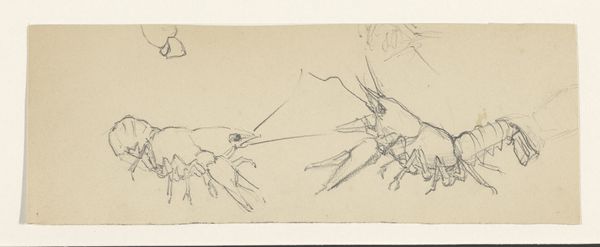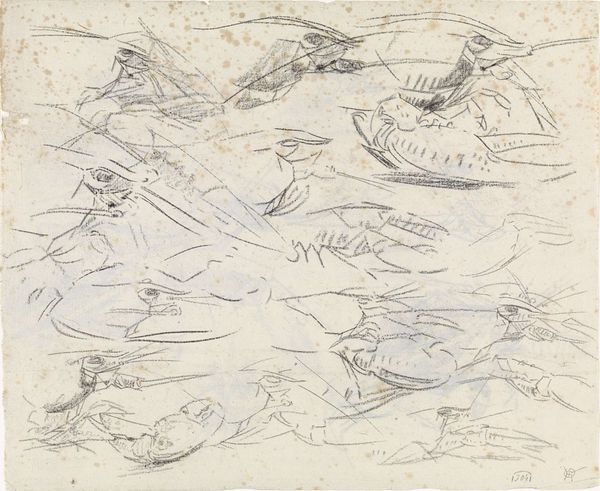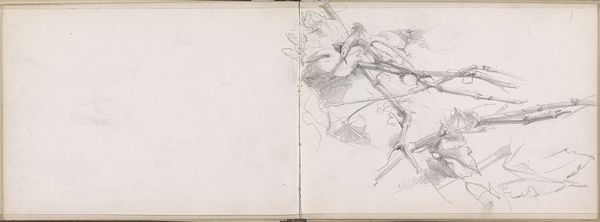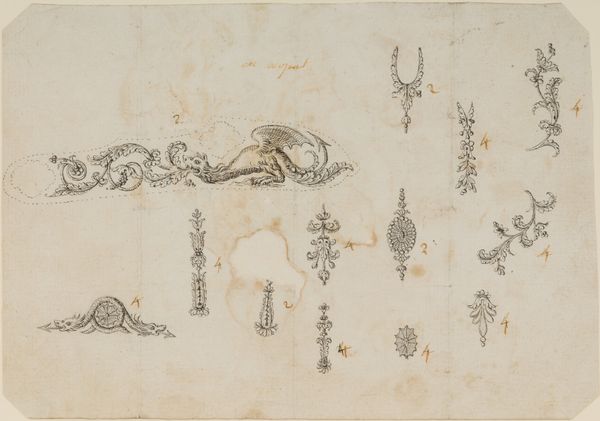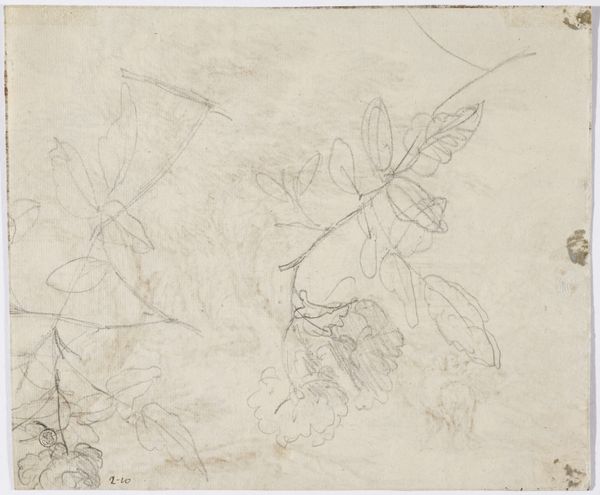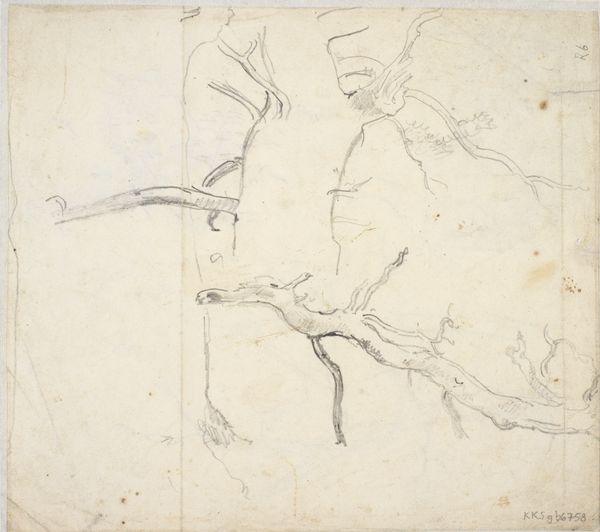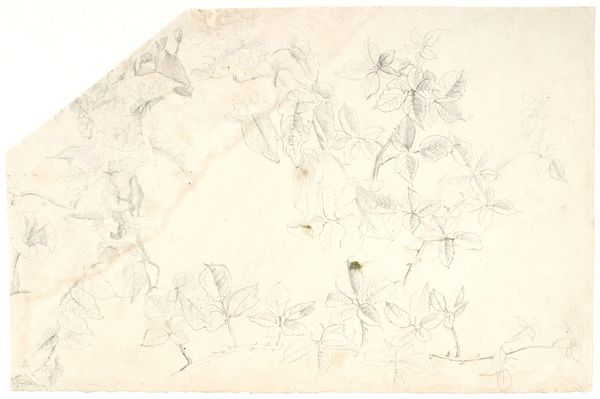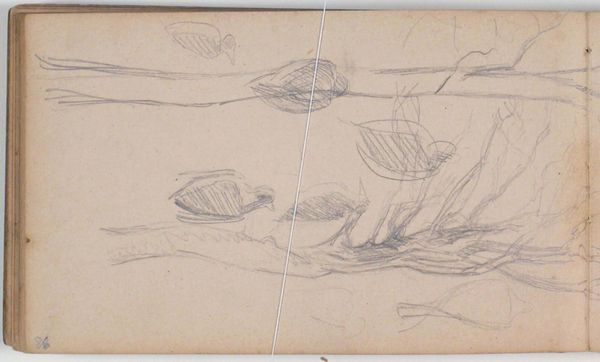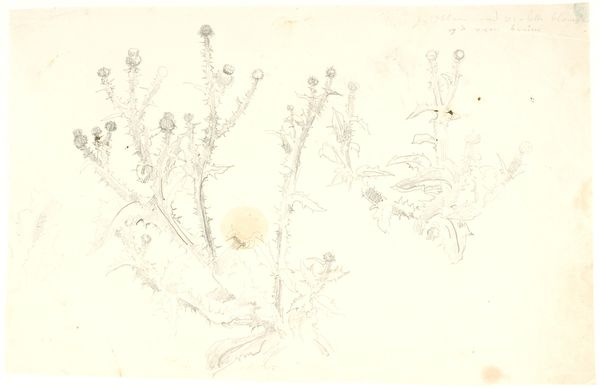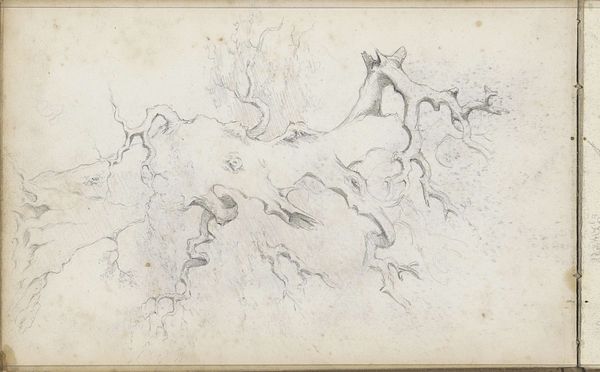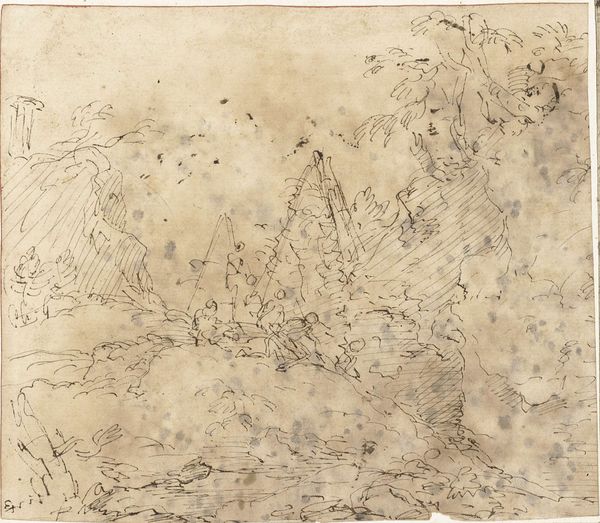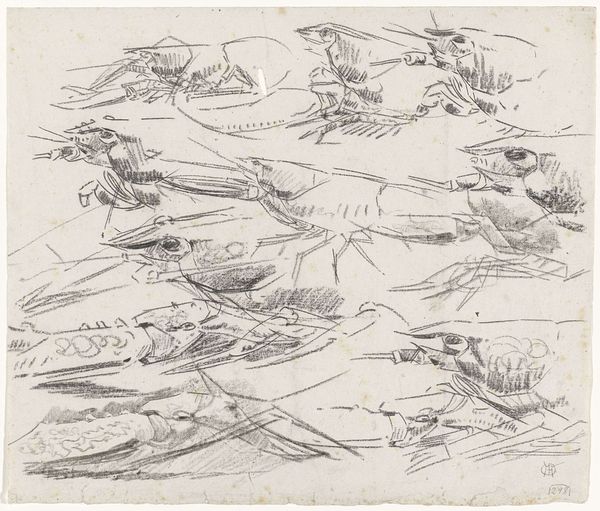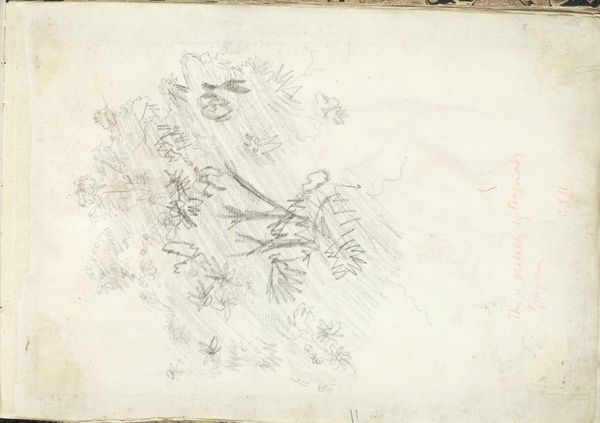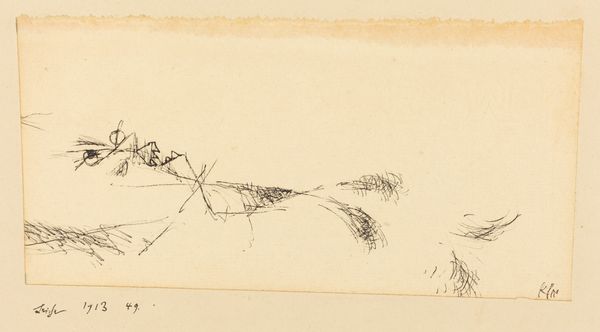
drawing, pencil, graphite
#
drawing
#
organic
#
quirky sketch
#
incomplete sketchy
#
personal sketchbook
#
sketchwork
#
detailed observational sketch
#
pencil
#
graphite
#
sketchbook drawing
#
storyboard and sketchbook work
#
sketchbook art
#
fantasy sketch
#
initial sketch
Dimensions: height 270 mm, width 328 mm
Copyright: Rijks Museum: Open Domain
Editor: We're looking at "Kreeften," or "Crayfish" by Gerrit Willem Dijsselhof, created sometime between 1876 and 1924. It's a pencil drawing currently held at the Rijksmuseum. I find the sketchiness quite charming; they feel so alive despite being unfinished. What do you see in this piece? Curator: What I notice is how this simple sketch embodies broader shifts in art’s function. Dijsselhof wasn’t creating a formal, commissioned portrait or landscape meant to convey power or status. Instead, we see an artist using drawing as a means of exploration, almost as a personal, scientific investigation. Editor: An investigation? How so? Curator: Consider the time period. Late 19th, early 20th century. There's a burgeoning interest in natural sciences and observation. Artists are engaging with these ideas. It moves beyond just rendering pretty pictures. The focus shifts to studying nature, capturing movement and form for the sake of understanding. Dijsselhof’s sketch feels less like decoration and more like… fieldwork. Does that make sense? Editor: It does! It feels less like a static artwork and more like a fleeting moment captured in a notebook. But doesn't the looseness of the lines also relate to artistic movements of the time? Curator: Precisely! The sketch highlights the process, mirroring the Impressionist and Post-Impressionist emphasis on subjective perception and the artist's immediate experience. The very act of sketching these creatures is now central to the artwork itself. This type of work democratizes art, moving it away from the elite salon and into everyday life, seen as subjects worthy of artistic study. Editor: So, it’s not just a drawing of crayfish; it represents a whole change in how artists viewed the world and their role in representing it. Curator: Exactly. And how art institutions like the Rijksmuseum decide to display even seemingly minor works is an indication of its historical value. Editor: That’s a fantastic perspective. I’ll definitely look at other sketches with fresh eyes now. Curator: Wonderful! It’s exciting when art reveals the currents of history beneath the surface.
Comments
No comments
Be the first to comment and join the conversation on the ultimate creative platform.
